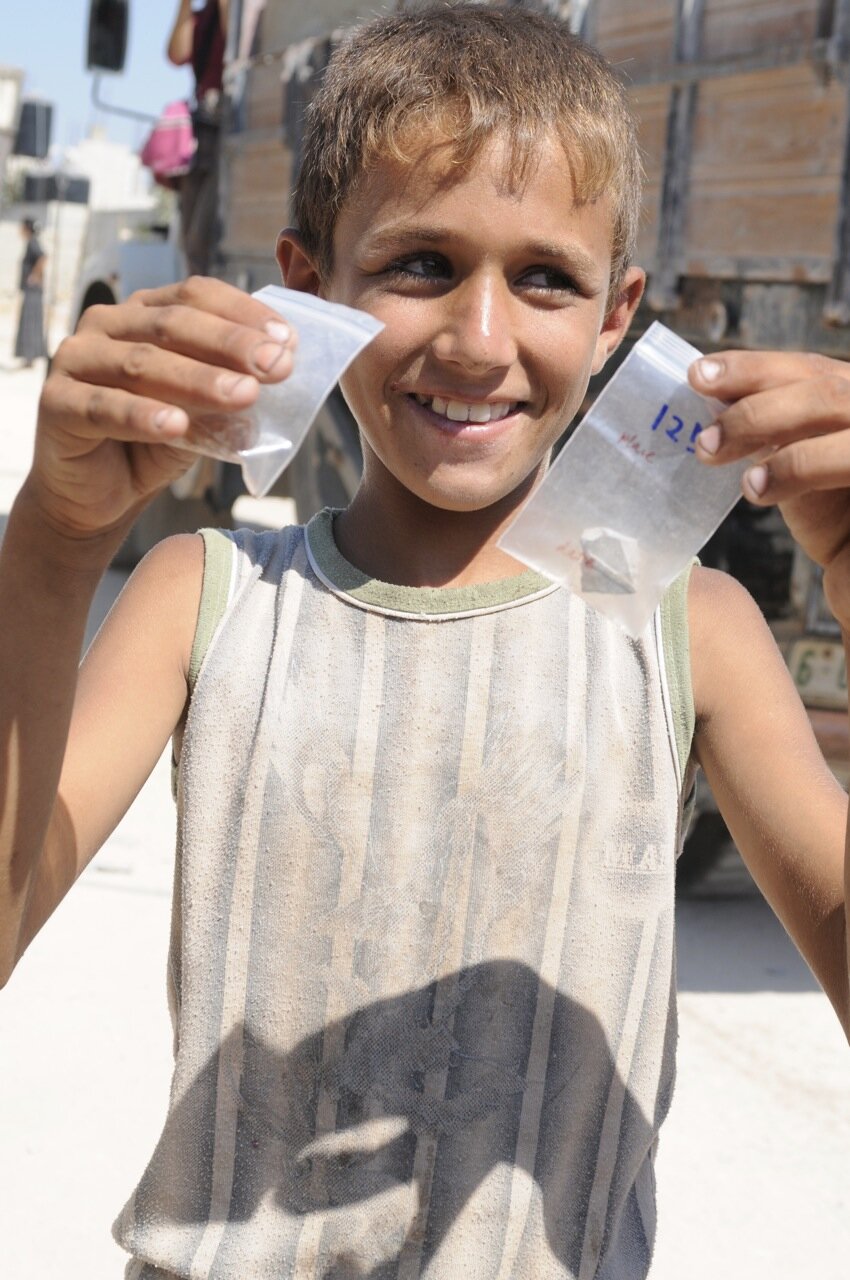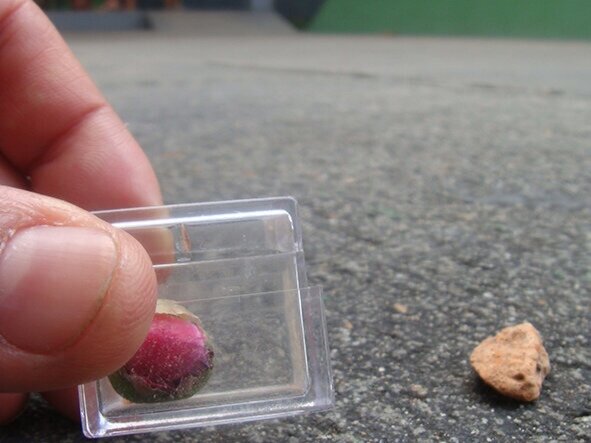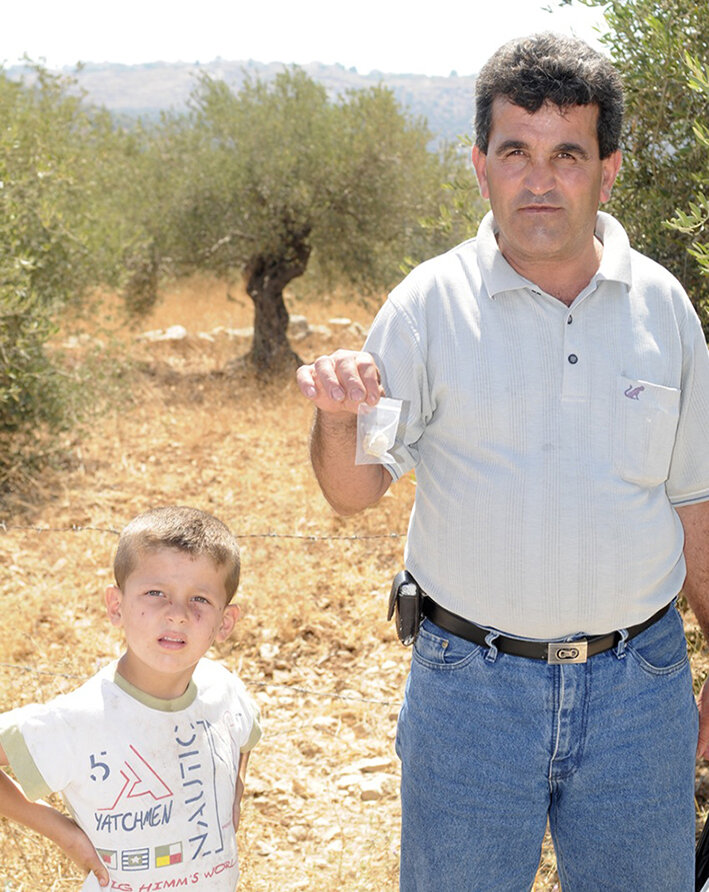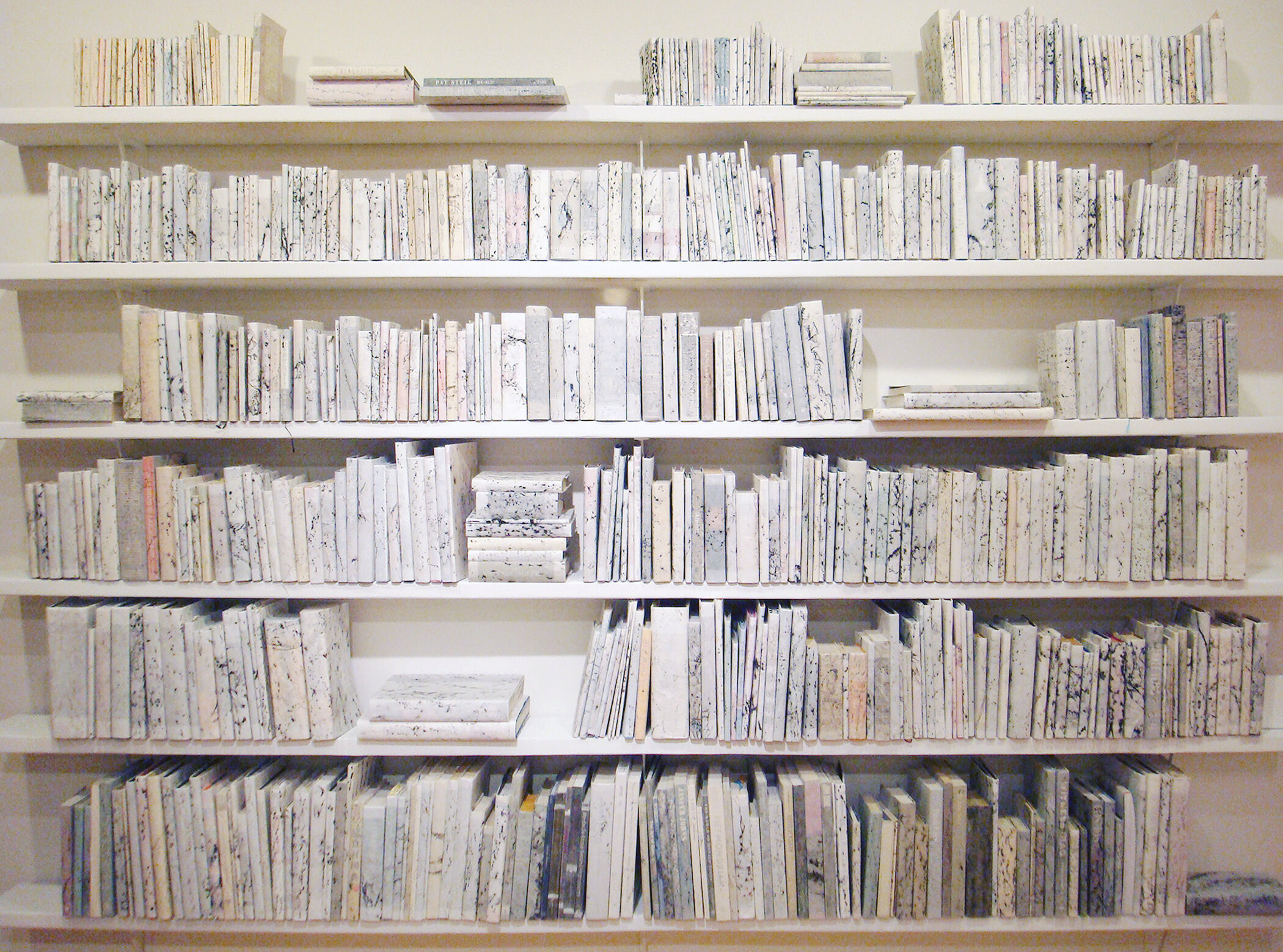
TSUNAGU【 繋ぐ 】
The word “Tsunagu” means connection in Japanese, embodying the art of the paths and intersections of the layers in the intangible world.
TSUNAGU WALL
2004 - present
I travel around the world creating tree rubbings using natural or handmade charcoal and traditional Japanese Washi paper. These rubbings explore connections between people. In my travels I also collect donated treasures and found debris. I've created a wall from these small objects. By uniting these objects in one piece of work, I connect people and their paths. These connections, embodied in the wall, are the Tsunagu.”
– Keiko Miyamori
Exchanged objects from TSUNAGU Wall 2004 - present, 9' x 6.5'
Multiple shelves, transparent boxes containing small objects
The wall, roughly 9 x 6.5 feet, has multiple shelves with small transparent boxes containing more than 4,000 small objects, such as a piece of brick, concrete, or metal that Keiko had harvested from a tree root in an urban construction site. Over time, she exchanged these boxes for objects from her friends and colleagues, or the content of the box to others when she traveled around the world. Any object could be contents of the box, such as bits of wall or building, city debris found on the street, a token from their home, or just lint from their coat pocket. TSUNAGU-Wall is made though Keiko’s personal connected world, but it also is a visual representation of our connected world.
Stone from Bani Zayid Village in Palestine, 2009
Objects from Iraq
Objects from Kenya
Objects from Brazil
Objects from Toyama, Japan
Objects from Australia
Objects from Tottori, Japan
Objects from Hong Kong
Detail of Tsunagu Wall
Through Miyamori, the objects are swapped around the world by first collecting a pair, and giving the other to a new participant. They act like seeds, spreading across countries and oceans, from metropolitan cities to rural villages. As they travel from place to place, the paths they take intertwine with those of pieces that have been traded, starting at a single point and multiplying as the exchange continues.
The physical wall of TSUNAGU is less that of a barrier, but instead, a space representing the connection of all the participants. The project began in 2004 and continues as she is constantly creating and seeking these connections around the world through her travels, inviting strangers and friends alike, to be a part of the TSUNAGU.

TSUNAGU RUBBINGS & BOOKS
2007 -
A collection of books from around the world, translucently covered with charcoal-on-washi tree rubbings, unites people of different nationalities, generations, spanning across different continents and social status, showing the connection beneath the surface. The series was incepted during Miyamori’s Cosmos exhibition in 2007, and has been expanded on since then, being displayed in Philadelphia at Fleisher Art Memorial in 2009, and BankART1929 in Yokohama, Japan in 2019.
TSUNAGU: MY FAVORITE BOOK
2009
My Favorite Book is a collection of six-hundred books from six-hundred unique individuals, with a charcoal-on-washi cover made for each book to unite them. While she collected books, Miyamori had a particular request, that the book be their “favourite.” From cookbooks to bibles, to textbooks and novels, books were brought together without discrimination. The result was a physical shelf of 600 books representing the distinct positive emotion the owner had towards their book, yet coming in different sizes and titles.
At the end of the exhibition, the books were then returned with the new cover as a permanent connection between them and others who had loaned their favorite book as well.
TSUNAGU Book: My Favorite Book 2009 Books, Charcoal, Washi, Wooden Shelf 120 x 95 ½ x 10 in.
Within the installation, was a tree root encased in resin, and charcoal-on-washi rubbings arching upwards and outwards from it. Known as Tsunagu Root, the base of the installation is a tree root preserved in resin, which was then connected to various branches, all captured on Washi.
TSUNAGU Root Root, Resin, Washi, Charcoal at the Fleischer Art Memorial, Philadelphia, 2009x
TSUNAGU BOOKS: YOKOHAMA
2019
#190369, cover with book.
#190369, completed book
#190369, wrapping the book
Detail of Tsunagu Book: Yokohama
In 2019, Miyamori returned to her hometown of Yokohama, Japan, to participate at the BankART1929 Station Seasonal Residency. While in Yokohama, she used the time to expand upon her TSUNAGU Project. Visitors and friends were invited to bring along a book and pick a custom cover created by Miyamori, who then created an interactive web map showing the connections throughout the country of where the books ended up.
Click on the markers to see more images.
より多くのイメージを見るためにマーカーをクリックしてください。
'Wind, Sand, and Stars / Antoine de Saint Exupery'

'Wind, Sand, and Stars / Antoine de Saint Exupery'






















